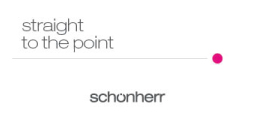The new year ushered in a new era for drone users in Hungary. On 1 January 2021, new regulations entered into force, introducing a new framework for drone usage, although many details remain unregulated. A significant part of the drone regulations is set forth on the EU level by Commission Delegated Regulation (EU) 2019/945 and Commission Implementing Regulation 2019/947. The new rules in Hungary promote the proper implementation of the relevant EU Regulations, and in some instances prescribe even stricter rules for drone users.
Drones and their owners must be registered
EU and Hungarian legislation define drones as "unmanned aircraft" ("UA"), which means any aircraft operating or designed to operate autonomously or to be piloted remotely without a pilot on board, e.g. multicopters, RC planes, RC helicopters, etc. A drone and its remote-control equipment together are referred to as "unmanned aircraft systems" ("UAS").
Operators of toy drones will not be much affected by the new regulations. Pursuant to Hungarian laws, unmanned toy aircrafts do not fall under any registration or licensing obligations. All drones fall into this category if they can be considered a toy in terms of the toy safety rules of Directive 2009/48/EC, are not equipped with a data recorder (e.g. a camera), do not exceed a take-off weight of 120 g, and cannot fly more than 100 metres away from the pilot.
Depending on various factors such as the size of the drone (e.g. below or over 25 kg) or the nature of use (e.g. flying over assemblies of people, transporting people, carrying dangerous goods), the applicable legislation differentiates among three operation categories: open, specific and certified operations.
However, before commencing any drone operations, drone owners or operators are obliged to register drones not falling in the toy drone category with the air traffic authority of Hungary. Furthermore, the owners or operators must be also registered with the same authority. This general registration obligation is somewhat stricter than those prescribed by EU legislation, since Commission Implementing Regulation (EU) 2019/947 requires only the registration of UAS whose design is subject to certification and for UAS operators whose operation may present a risk to safety, security, privacy, and protection of personal data or environment.
Pursuant to the EU Regulations, specific and certified drone operations (e.g. using drones for agricultural spraying of pesticides or flying over assemblies of people) are subject to operational authorisations and certifications, depending on the nature of use.
How to become a drone pilot
Having a drone registered with the air traffic authority and procuring the respective authorisations or certifications in line with the relevant UAS operation category is only part of what is needed to operate a drone. To lawfully fly a drone, pilots must undergo a training programme and take an exam. However, the relevant decree specifying the details of the training programme (e.g. certification of training centres, exam requirements) has not been adopted yet. Certificates issued before 2021 will not be acknowledged under the new drone regulation regime, meaning that all drone pilots currently active in the field are required to pass a new exam.
How to use the airspace
Save for no-fly zones, flying a drone over an uninhabited area does not require a specific airspace licence. However, commencing a UAS operation above an inhabited area is subject to a permit issued by the Ministry of Defence, in which a temporarily designated airspace is specified for a definite period. The request for a temporarily designated airspace must be submitted to the Ministry of Defence at least 30 days prior to the intended use. However, according to the practice of the Ministry of Defence, it is advisable to submit the request 45 or even 60 days prior to the intended use of a drone. The designation procedure is free of any administrative fees.
No-fly or no-drone zones may be designated by law with respect to the facilities found there or to the nature of the activities carried out within certain areas. In order to identify no-drone zones before taking off, drone pilots are obliged to sign in and use a mobile application maintained by the government. The details of this mobile application will be governed by a government decree that has not been published yet. If there is a connection issue (e.g. there is no signal) and the drone operator cannot use the mobile application, using the drone is forbidden due to the inability to identify the local no-fly or no-drone zones.
New fines and criminal consequences for violating drone regulations
The new regulations introduced a rather strict sanctioning system, according to which an aviation fine of up to HUF 100,000,000 (approx. EUR 280,000) may be imposed for violations of drone operation rules. The amount of the fine depends on various factors, including the level of hazard created by the violation.
Furthermore, recording sound or images of another person's residence or other premises or a fenced area (e.g. a garden, etc.) during an unauthorised UAS operation qualifies as a misdemeanour and may be punished with 60 days' confinement. If the recording of sound or images is done regularly and the images are published, the pilot may face imprisonment of up to one year.
Conclusion
The new rules have made drone operations more burdensome, and many details, especially regarding training and qualifications and the compulsory drone app, are still unclear. In addition, the need to request temporarily designated airspace at least 30 days before the intended use makes life especially difficult for drone pilots. Time will tell if the new drone operation rules will promote or unreasonably restrict drone usage.
By Daniel Varga, Attorney at Law, and Akos Kovacs, Associate, Schoenherr


